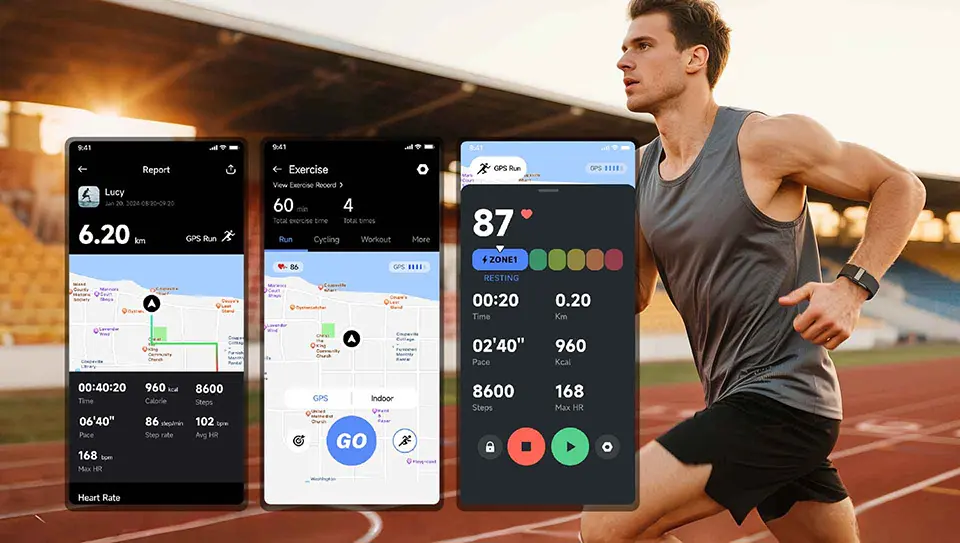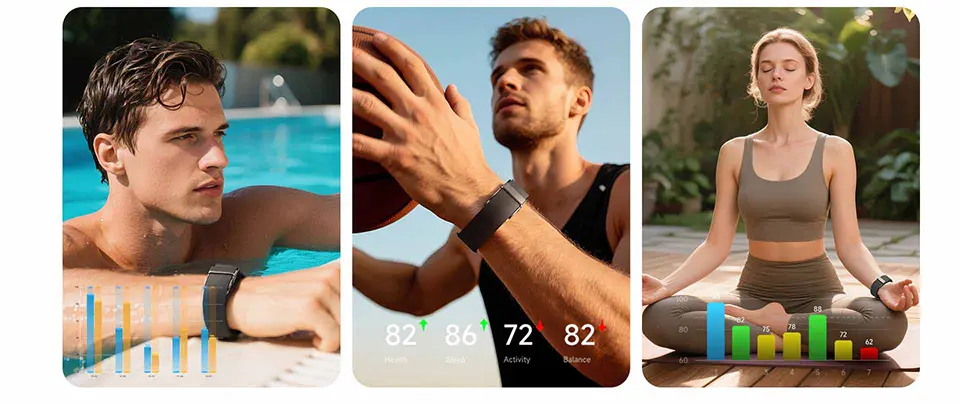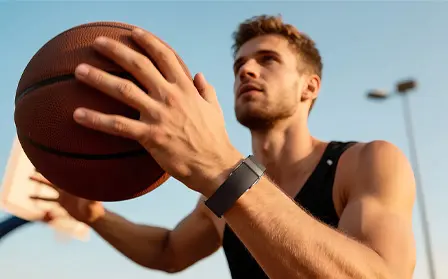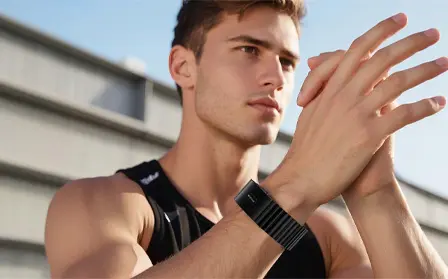Updated 1 week ago
The Ultimate Guide to the Fitness Tracker Bracelet: What to Look for in 2025
youhong
In today’s fast-moving health and wellness market, the fitness tracker bracelet has become a must-have accessory for anyone serious about tracking their activity, sleep, recovery and overall health metrics. At J-STYLE (Youhong Medical / Jointcorp), we believe that the next generation of wearable devices—whether a smart ring, wristband or bracelet—must combine sleek design with deep biosensing capabilities, long battery life and smart insights.
In this guide, we’ll walk you through:
- What a fitness tracker bracelet really is
- Key features you should look for in 2025
- How to choose the right device for your needs
- Why OEM/ODM brands should evaluate J-STYLE’s solution
- Frequently asked questions
What Is a Fitness Tracker Bracelet?
A fitness tracker bracelet is essentially a wearable band (often worn on the wrist) that monitors movement, physiological signals and health metrics. Unlike a standard smartwatch, many fitness bracelets focus primarily on activity/sleep/health tracking rather than full smart-watch functions. Some recent guides highlight that the best fitness trackers give you health and fitness metrics in a package “smaller and cheaper than your average smartwatch.” TechRadar+2Wareable+2
Features commonly include step count, calories burned, heart rate, sleep duration/depth, sometimes SpO₂ or stress monitoring, and often tie into apps. As the market evolves into 2025, we’re seeing more advanced functions such as HRV (heart rate variability), non-invasive glucose estimates, long battery life and integration with wellness ecosystems.

Key Features to Evaluate in 2025
When you search for a “fitness tracker bracelet”, here are the critical specs and capabilities to consider:
1. Accurate Heart Rate & SpO₂ Monitoring
Reliable heart rate monitoring is now standard—but for meaningful insight (e.g., workout zones, recovery, stress), you’ll want high-quality optical sensors and validated algorithms. Some trackers are also adding SpO₂ (blood oxygen saturation) monitoring. Industry reviews cite such metrics as a major differentiator. New York Magazine+1
2. Sleep & Recovery Tracking
Beyond counting steps, top trackers now provide deep sleep, light sleep, REM cycles, body movement and recovery indices. For example, monitoring one’s recovery is increasingly cited as important in wearable reviews. Bloedwaardentest.nl+1
3. Long Battery Life & Wearability
The best trackers combine rich feature sets with battery life that supports 5–10+ days (or even weeks) of use. A recent guide notes battery life as a “make-or-break” feature for many users. trainwithdave
4. Comfort, Design & Fit
Since the bracelet is worn all day (and often all night), comfort, strap adjustability, waterproofing and aesthetics matter. Many reviewers point out that users will only benefit from full-time wear if the device is unobtrusive. TechRadar+1
5. Software, Insights & Ecosystem
A good tracker isn’t just hardware—it’s the app experience, data insights, ease of use and compatibility with iOS/Android or health platforms. Some of the top published lists emphasize this. New York Magazine
6. Advanced & Emerging Capabilities
For premium models, features such as HRV, stress monitoring, ECG, non-invasive glucose risk assessment, multi-sport modes and AI coaching are differentiators. As wearable tech matures, these advanced metrics become more common. inkin.com+1

How to Choose the Right Fitness Tracker Bracelet
To pick the right bracelet, follow these steps:
- Define your goal: Is it daily activity tracking? Sleep & recovery monitoring? Fitness training? Or health risk management?
- Match features to goal: If you’re training, ensure heart rate zones and multi-sport modes are supported. If you’re tracking wellness and recovery, look for HRV and sleep depth.
- Check battery and usability: A tracker that must be charged daily often ends up unused.
- Design & comfort: Will you wear it 24/7? If not, you’ll lose data continuity.
- App & data integration: Can you export data? Does it connect to Apple Health or Google Fit?
- Brand & OEM/ODM flexibility: For brands looking to develop their own device, choosing a partner offering customization, firmware support and medical-grade sensors is key. That’s where J-STYLE’s offering comes into play.
Why J-STYLE Fitness Tracker Bracelet Solutions Stand Out
At J-STYLE (Youhong Medical / Jointcorp), we offer a full suite of smart wearable solutions—including fitness tracker bracelets—designed for both B2C health markets and B2B/OEM/ODM partnerships. Here’s why our solutions merit attention:
- Medical-grade sensors and algorithms: Accurate heart rate, SpO₂, HRV, stress and sleep analytics.
- Advanced features: Non-invasive glucose risk assessment, AI-based health insights and coaching.
- Flexible design: Customized hardware, firmware and color/size options for brand partners.
- Strong app ecosystem: Cloud data platform, mobile SDK/APIs and compatibility with mainstream health platforms.
- Global readiness: Waterproofing, international certification capabilities, scalable manufacturing.
If your brand is looking to launch or upgrade a “fitness tracker bracelet” product for 2025 / 2026, J-STYLE provides a compelling platform.

FAQs
Q1: Do I need a large display to get good fitness tracking?
Not necessarily. Many high-quality fitness tracker bracelets focus on sensors and battery life rather than large screens. Efficiency and comfort often matter more than flashy displays.
Q2: Is waterproofing important?
Yes. For daily wear (including showers, swimming or sweat sessions), look for at least 5 ATM (50 m) water resistance.
Q3: Will the bracelet only track steps?
No. Modern bracelets track steps, distance, calories, heart rate, sleep stages, stress, recovery and more. Premium models go further with multi-sport modes, HRV, SpO₂ and coaching.
Q4: How often do I need to charge it?
Depends on usage, sensors enabled and battery size. Choose a tracker with at least 5 days of typical use so it stays on your wrist longer.
Q5: Can brands custom-brand these bracelets?
Yes. Many OEM/ODM providers (like J-STYLE) support hardware & firmware customization, branding, app white-labeling and regional certification.
Conclusion
The term “fitness tracker bracelet” may sound generic, but in 2025 it stands for a powerful fusion of wearable form, health-tech function and smart data. Whether you’re a consumer looking for reliable health tracking or a brand seeking a competitive wearable product, focusing on sensor accuracy, user experience, battery life and ecosystem is key.
At J-STYLE (Youhong Medical / Jointcorp), we understand the demands of both users and brand partners. With our deep expertise in wearable health technology, we’re ready to help you harness the full potential of the fitness tracker bracelet era.
About the Author

Kyler is a senior content marketing specialist at J-Style(Joint Chinese Ltd | Youhong Medical), a leading smart ring, smart band, and smart watch manufacturer and supplier in China. With 8 years of experience in the wearable tech industry, he creates professional content for global B2B buyers seeking reliable factory, wholesale, OEM/ODM, and SDK/API solutions. At J-Style, Kyler focuses on helping partners understand the value of high-quality Chinese smart wearables and how J-Style’s innovative manufacturing capabilities support scalable business growth.







